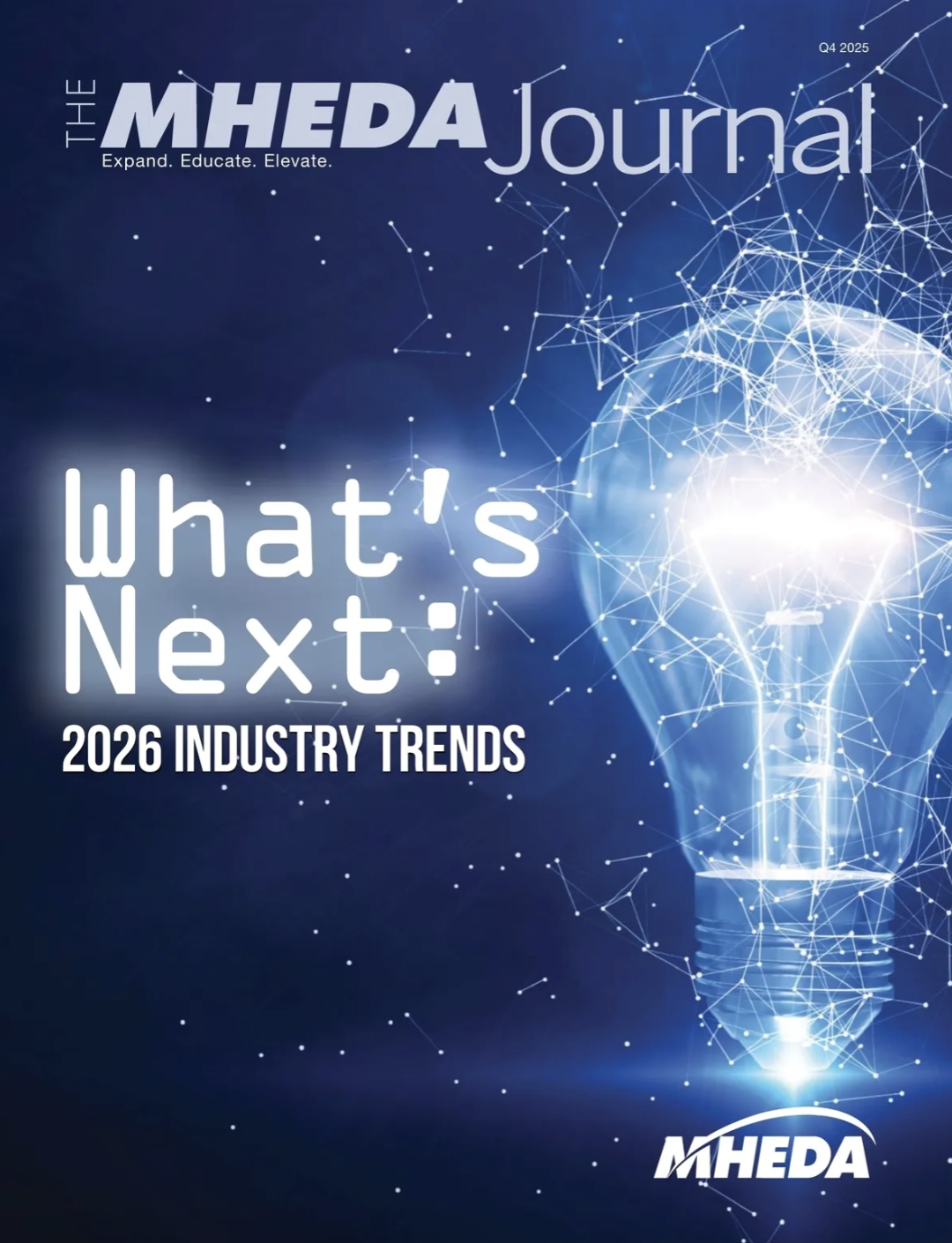From generational shifts to labor shortages, here’s what you can expect.
By Nicole Needles
AS WE STEP into 2025, businesses across industries, including material handling, face a rapidly shifting labor landscape. Claudia St. John, Founder and CEO of The Workplace Advisors™, sheds light on the key trends shaping the workforce and offers actionable insights for organizations striving to adapt. St. John will be one of the workshop speakers at this year’s MHEDA Convention, and you won’t want to miss her valuable insight into what the workforce is going to look like this year and beyond.
Some of these are new challenges, or old challenges showing up in a new way. No matter the case, learning about everything shifting in our world today is crucial to formulating successful and fool-proof business plans.
The Baby Boomer Exodus
and Labor Shortages
One of the most pressing challenges for 2025 is the continued retirement of baby boomers. “Every single day, we see many thousands of baby boomers retiring,” St. John notes. Unfortunately, their departure leaves a gap that younger generations aren’t filling quickly enough. “We really aren’t replacing them sufficiently,” she adds, forecasting that this labor shortfall will persist through the century.
Compounding the issue is a declining birthrate. St. John points out, “By 2040, we will have more deaths than live births in the United States.” This demographic shift, coupled with political debates around immigration, creates a perfect storm of labor shortages.
For businesses struggling to hire, the message is clear: “If you’re having a hard time hiring people, it’s because they’re working somewhere else for someone else. We’re all competing for the same limited labor pool,” St. John emphasizes.
Generational Shifts:
Embracing Gen Z
The emergence of Gen Z in the workforce marks a significant demographic shift. Unlike millennials, who are now well into their careers, Gen Z brings unique traits and challenges.
“They were the first total digital natives,” says St. John. “They’ve created entire communities online, but they also come with much more anxiety, mental health challenges and greater neurodiversity.” For businesses, this means adapting hiring and management practices to accommodate this diverse and often misunderstood talent pool.
Traditional hiring practices may inadvertently exclude highly capable individuals.
“If you’re still using old-school hiring standards, you may be overlooking someone who could be an amazing employee,” St. John warns. She encourages organizations to rethink panel interviews and other rigid processes to better align with the strengths of neurodiverse candidates.
Automation and AI:
Closing the Labor Gap
Automation and artificial intelligence are no longer optional – they’re essential for addressing workforce shortages.
“MHEDA is fortunate because automation is already well-developed in this industry,” St. John says. She sees AI playing a pivotal role in tasks such as scheduling, policy development and operations.
While some fear that automation may diminish the role of workers, St. John reassures that human oversight remains crucial.
“There’s still a need for a human being to say, ‘Is this right? Does this make sense?’” she explains. By leveraging automation thoughtfully, businesses can maintain productivity while addressing labor constraints.
Evolving Expectations for
Flexibility and Wellness
Employee expectations have evolved significantly, particularly regarding work life balance.
“The cosmic shift that happened in 2020 can’t be undone,” St. John asserts.
While many roles in material handling require on-site work, employees increasingly demand flexibility, even in these positions. “They want to be able to shift schedules occasionally to manage life’s challenges,” St. John explains.
Moreover, a focus on wellness is nonnegotiable. Employees want to feel valued beyond their job functions. “If employers still view employees as expendable cogs, there are plenty of other places for them to go,” she cautions. Organizations must prioritize wellness, offer competitive compensation and create meaningful work environments to retain top talent.
The Role of Interpersonal
Skills and Loyalty
Employers are placing a renewed emphasis on interpersonal skills, both in hiring and management. Behavioral assessments are becoming more common, providing insight into how candidates are wired and how they might interact with others.
Supervisors, in particular, need training to develop essential skills like empathy, communication and conflict resolution. “We used to call them soft skills; now we call them essential skills,” St. John notes. Equipping managers with these tools is critical, as employees often leave managers – not jobs.
Retention Starts on Day One
Retention efforts must focus on the early stages of employment. “The first six to eight weeks are the most critical,” St. John explains. During this period, organizations should establish clear learning objectives, provide regular feedback and ensure new hires feel supported.
“Twenty-two percent of employees turn over within the first 45 days,” she points out. Structured onboarding programs can mitigate this risk and help businesses retain talent longer.
Looking Ahead: A Call to Action
St. John urges businesses to recognize the severity of the labor crisis. “If this were any other aspect of their business, they’d have all hands on deck trying to solve the problem,” she says. The time for action is now, and the priorities are clear:
• Automate and innovate where possible.
• Reevaluate hiring and retention practices to align with today’s workforce.
• Invest in training supervisors and managers to foster a supportive, empathetic culture.
As the workforce continues to evolve, businesses that adapt to these trends will be best positioned for success in 2025 and beyond. “This is a crisis that’s not going away,” St. John concludes. “It’s time to fix it.”
Article Takeaways
1. Demographic Shifts. The ongoing retirement of baby boomers, coupled with a declining birthrate, is creating a long-term labor shortage that younger generations are not filling quickly enough.
2. Gen Z Entering the Workforce. As digital natives with higher rates of anxiety and neurodiversity, Gen Z requires businesses to adapt hiring and management practices to attract and retain top talent.
3. Workplace Flexibility. Companies must embrace automation, AI and flexible work environments to address labor shortages and meet evolving employee expectations.




